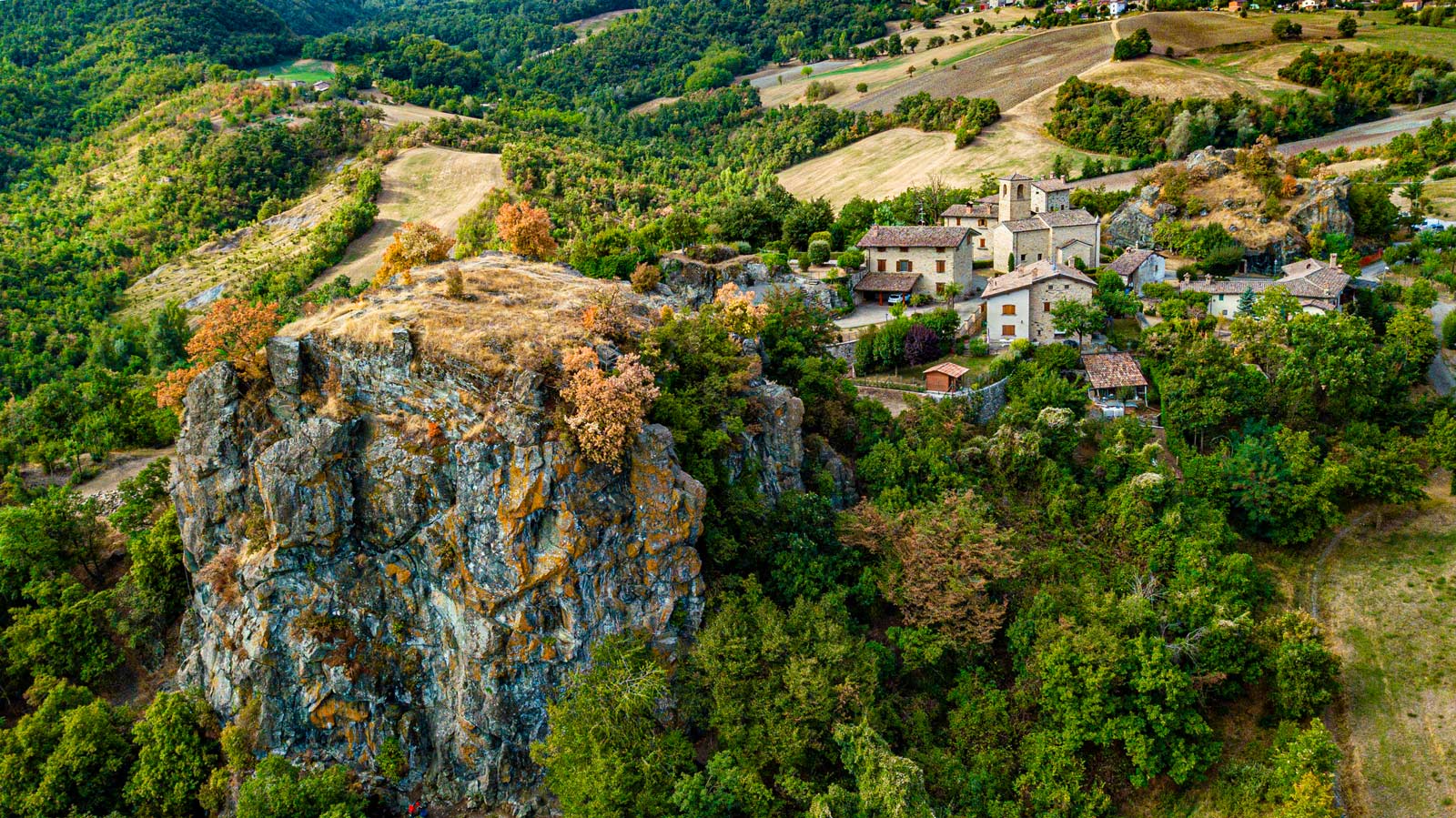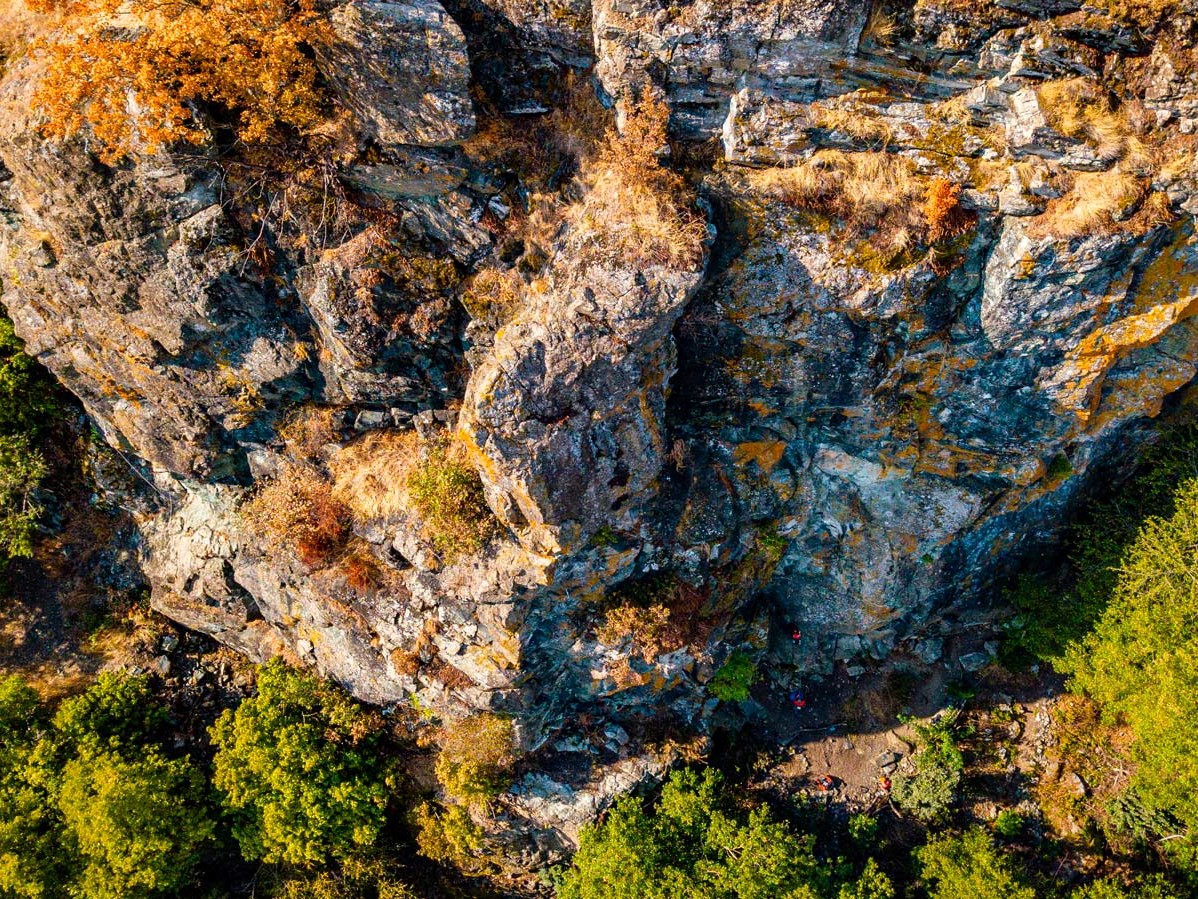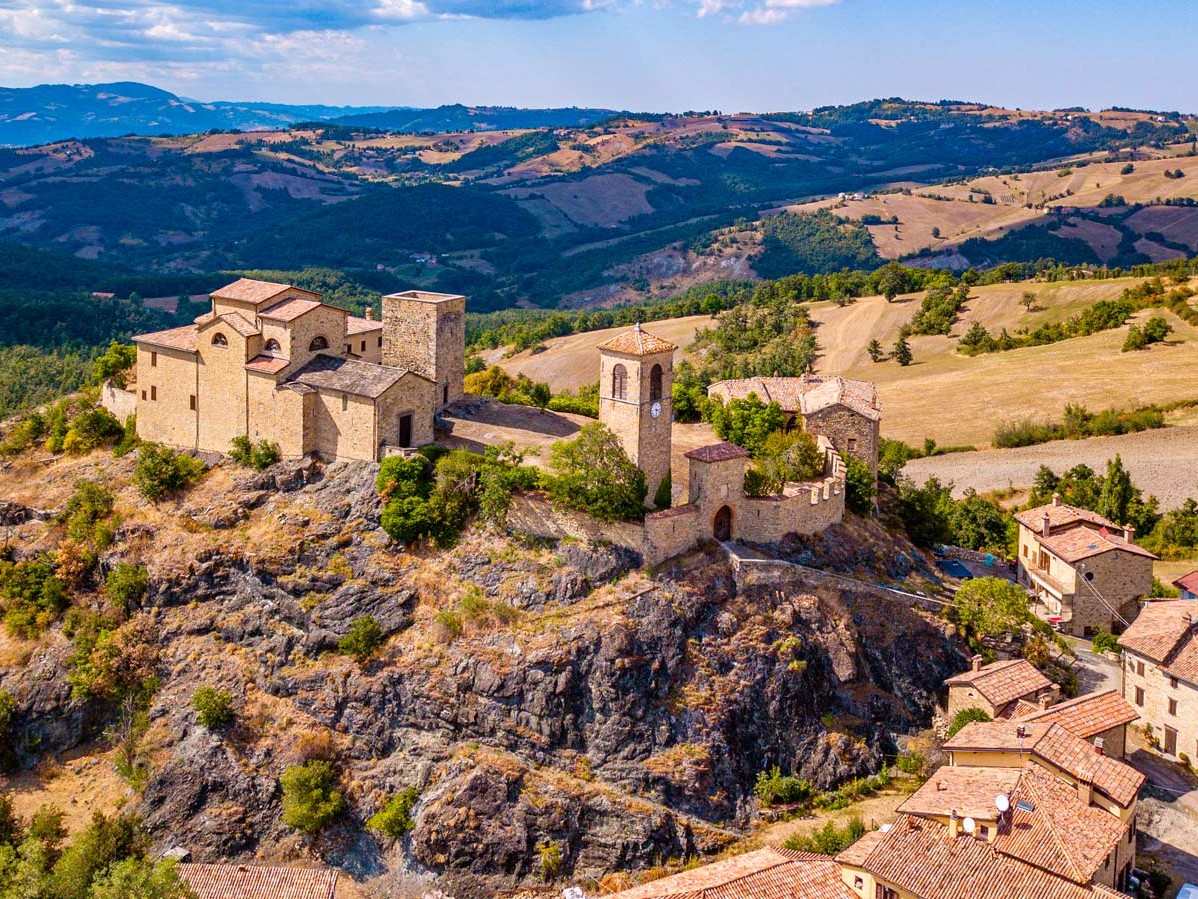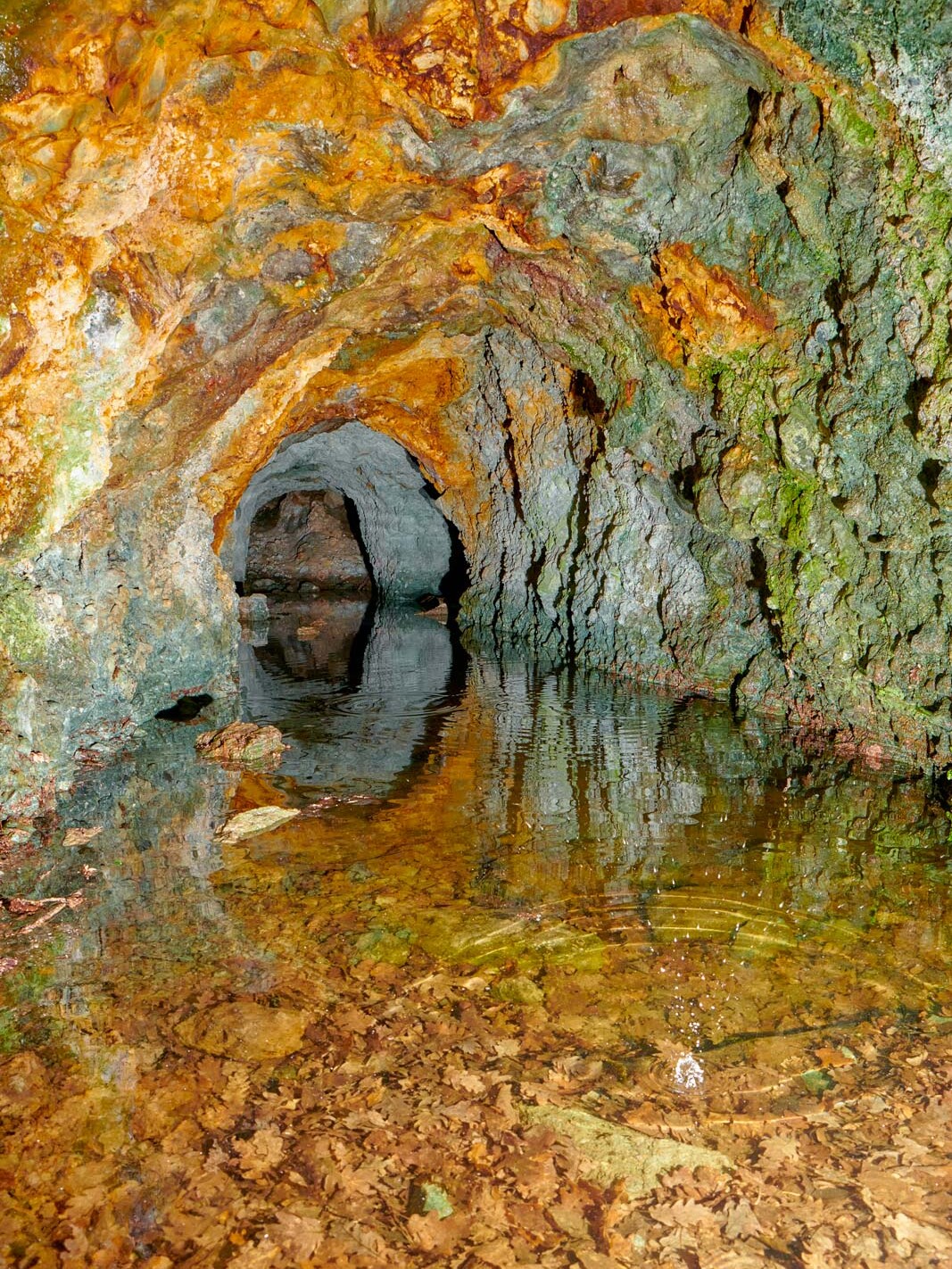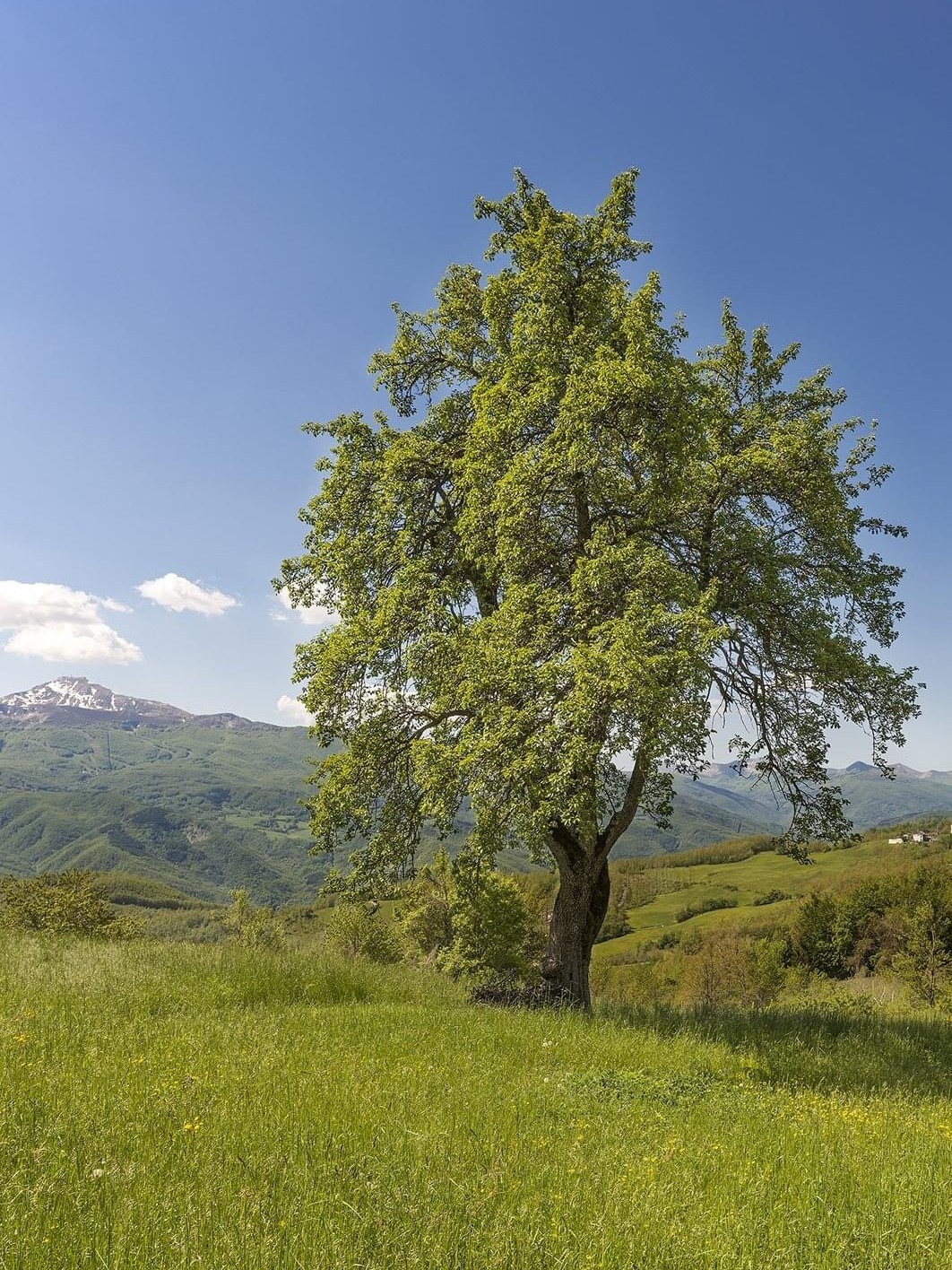In the hamlet of Pompeano, as well as in the nearby locality of Varana Sassi, there are some spectacular, rare rock masses of eruptive origin. They are dark green, almost black, in colour, and rich in iron and magnesium. An extremely rich vegetation grows on their surface, made up of typical tree specimens and numerous types of lichens.
These serpentine rocks act as exceptional viewing platforms. Due to their compositional hardness, they are set apart and stand out prominently from the surrounding terrain, which is mainly formed of flaky clays and sands that have subsided over the millennia due to atmospheric corrosion.
The origin of these rocks
These huge, prominent rock spurs, like others in the Apennines, were formed by volcanic eruptions occurring 200 million years ago, on a ridge that had formed on the bed of the Tethys Gulf, which once existed where the Ligurian Sea is situated today.
Thirty million years ago, the marine ridge – made up mainly of clay, ophiolites and serpentines, as well as sand, mud and silt – deformed and slid away from its place of origin, Tethys, to here, forming the terrains that now make up our Apennines. This occurred due to compression caused by the African and Eurasian continents moving closer together.
The Pompeano Ophiolite is traversed by an inner fault that forms a cave which is approximately thirty metres long.
The cave, discovered purely by chance by a local child, can be visited with the assistance of the Modena section of the CAI (Italian Alpine Club) speleological group, and is only open to the public during the town’s summer festival, which takes place on the first Saturday and Sunday of August. Inside the cave, you can admire an underground lake, which is about twenty metres deep and inhabited by the Italian newt.
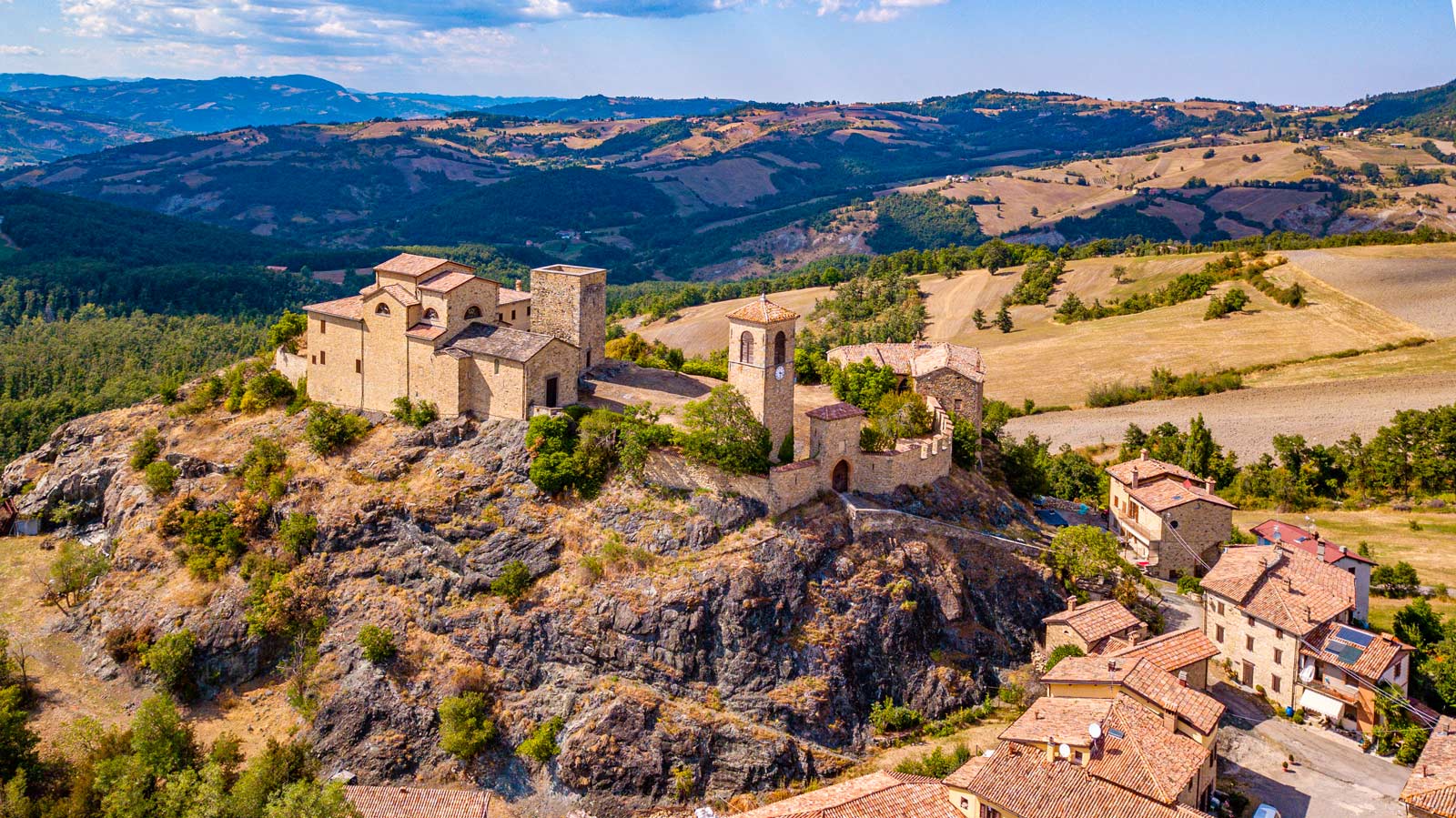
The nearby Sassi di Varana (Varana Rocks) are the perfect place to practise rock climbing, an exciting sport to be undertaken with the help of qualified guides.
